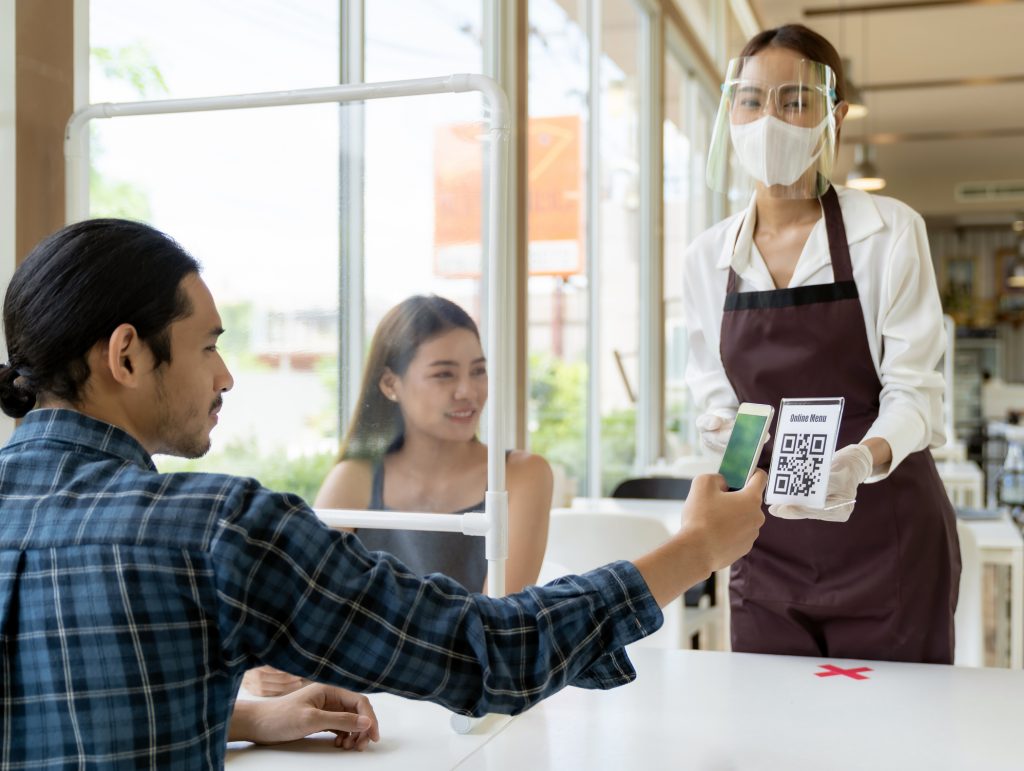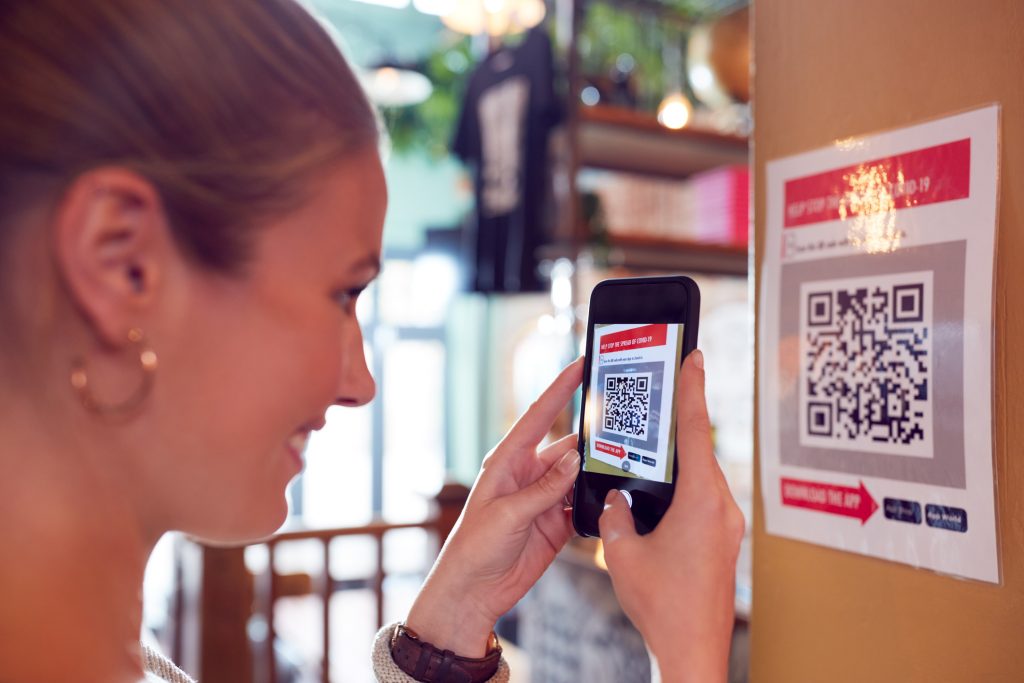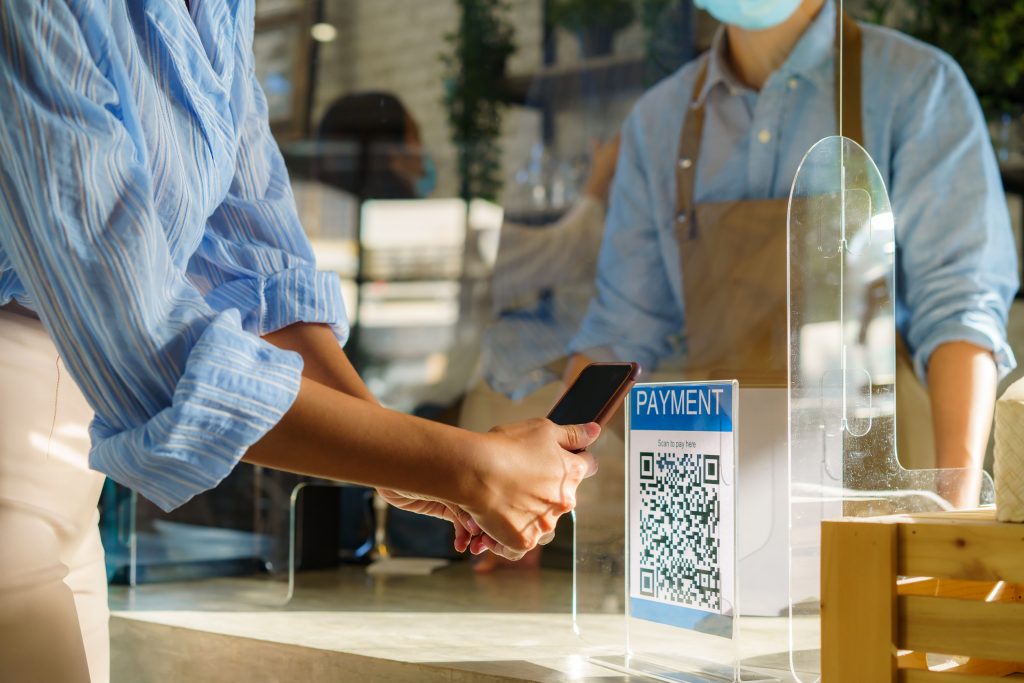COVID-19 has brought many changes to the world, one of which is the QR code revolution. The QR code was popular a decade ago, but it began to decline in usage in more recent years (except in China) until the current coronavirus pandemic brought it back to life. These black square grids have proved to be a valuable resource in the fight against the pandemic, in the form of venue check-ins and test registering.

The inventor of the QR code, Masahiro Hara, has said he is “pleased it is being used for people’s safety” in the wake of its widespread adoption in the fight against COVID-19. Here’s a look at how the humble barcode has played a key role over the last year, keeping people safe and enabling the hospitality industry to operate as normal.
Touchless Display Systems
As the pandemic began to spread, the hospitality industry needed a way to help stop outbreaks from happening in their venues, causing them to shut their doors. They also needed to implement practices to reassure anxious people that they had taken appropriate safety measures. Aside from hand sanitiser everywhere and one-way systems, restaurants and bars adopted QR code displays.
Rather than hand out menus for patrons to physically touch – risking the chance of the virus spreading – many of them had people scan a QR code decal on their table entrance, which took them to an online version of the menu. This prevented the need for single-use paper menus or implementing a stringent cleaning routine of all menus after use. Some venues even used the system to allow people to place their orders online, minimising the time servers spent at their tables. It’s thought that some venues may even keep this new system as the virus winds down, as it offers a convenient way for people to be served more quickly and frees up the wait staff.
Contact Tracing
Contact tracing became a part of everyday life during the pandemic, the goal being to help track individuals who have been exposed to someone who has tested positive for the virus. The idea was to help track the spread while also trying to minimise it by sending out alerts to those who had been in contact with an infected individual, telling them to self-isolate to further squash the potential for the virus to spread further.
While the NHS COVID-19 app used Bluetooth on smartphones to check if people had been in close proximity, it was also combined with the venue check-in system. Businesses were encouraged to display an NHS QR code poster at their venue entrance. Patrons could check-in to a venue with their phone, which would then record them going into that venue. Should someone test positive for the virus who had also been at that venue at the same time, an alert would be sent to their phone to let them know to self-isolate.

Lateral Flow Tests
The lateral flow tests have played a crucial role during the pandemic. They are simple to use and provide results in up to 30 minutes, helping people to test themselves at home for coronavirus. After many studies across the world, they were implemented as a new approach to combat the pandemic. They were approved for self-use in the UK on 23rd December 2020, being widely available in pharmacies across the country.
Each test strip includes a tiny QR code that users use to report their results. They scan the QR code, and it takes them to the official reporting website, where they can input their details and the results of their test. This data is crucial for helping to understand the spread of the virus across the country.
Contactless Payment
While contactless payments have been around for a long time in the form of Apple Pay, Google Pay and Samsung Pay, QR codes saw a surge in usage for contactless payments during COVID-19. PayPal introduced a new feature on its mobile app, letting people pay by simply scanning a QR code with the phone’s camera. The feature has made it easier for venues to offer touchless payments without the need to buy new equipment, making it a more convenient way to pay for both themselves and their customers.

Barcodes have always played a significant role in the medical industry, whether by providing effective asset management, supply chain control, auto-ID solutions, specimen identification, and much more. They have enabled healthcare professionals to harness accurate, up-to-date data that they can use to drastically improve patient care. The pandemic has only served to highlight how vital precise data is in the medical world and how barcodes, when utilised effectively, are a complete game-changer for accurate data gathering.
At GSM Barcoding, we offer a vast range of barcode labels and asset tracking solutions that can transform your supply chain. Contact us today to learn more about any of our barcode label printing or inventory management systems.


















